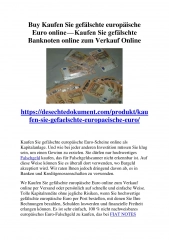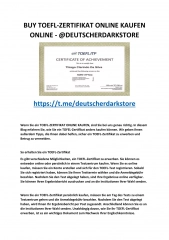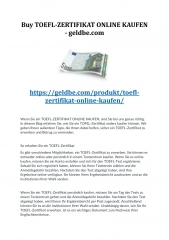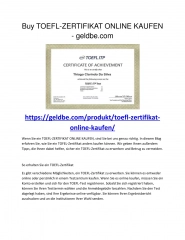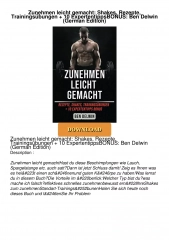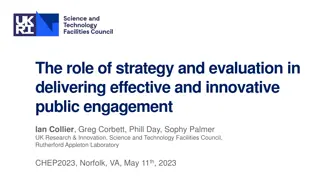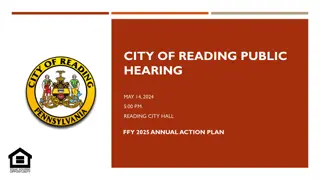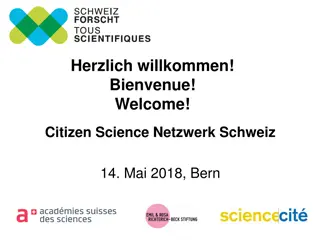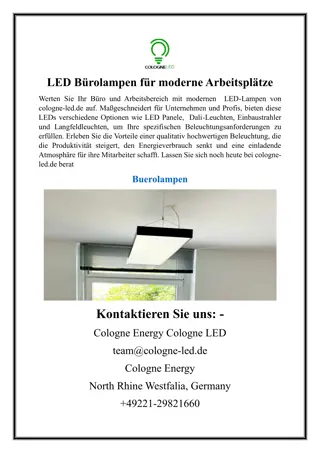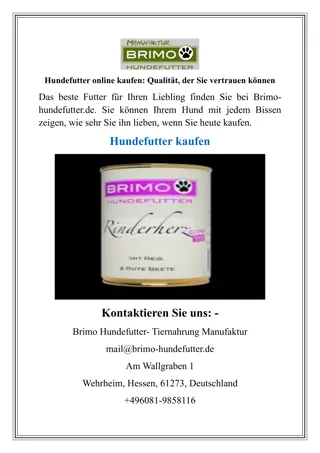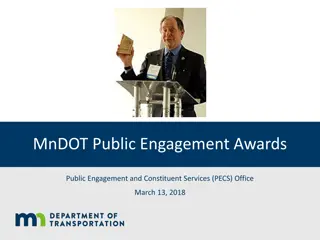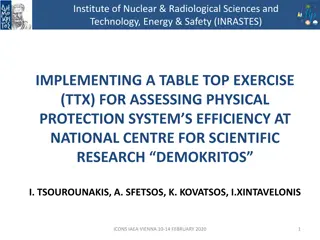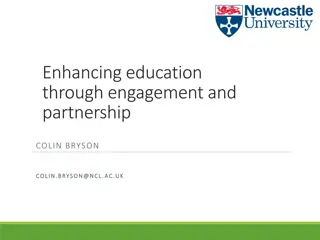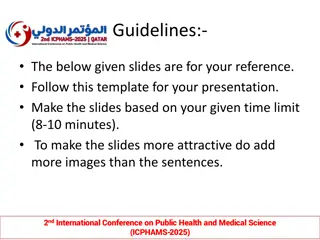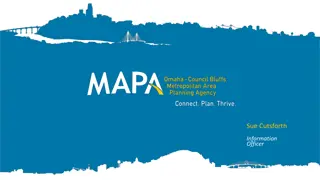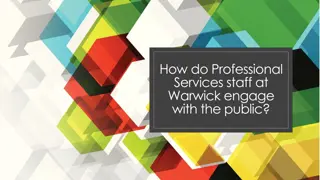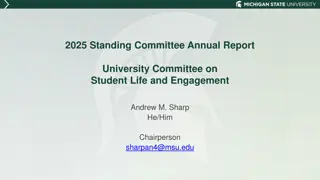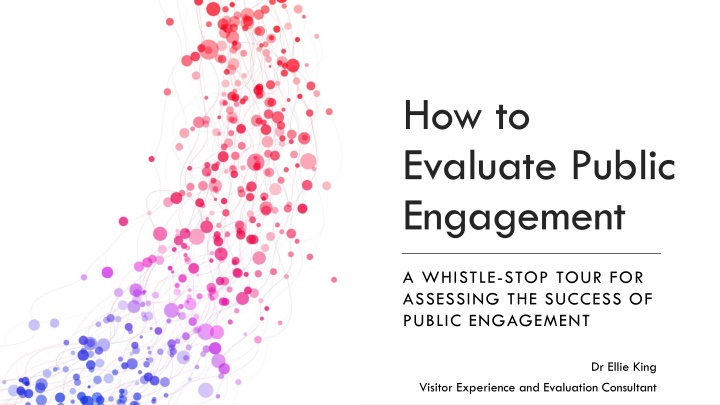
Guide to Evaluating Public Engagement for Success
Explore Dr. Ellie King's approach on assessing the success of public engagement, focusing on outcomes, evaluation methods, data collection, and audience impact. Learn why evaluation is essential and how it benefits museums and cultural institutions.
Download Presentation

Please find below an Image/Link to download the presentation.
The content on the website is provided AS IS for your information and personal use only. It may not be sold, licensed, or shared on other websites without obtaining consent from the author. If you encounter any issues during the download, it is possible that the publisher has removed the file from their server.
You are allowed to download the files provided on this website for personal or commercial use, subject to the condition that they are used lawfully. All files are the property of their respective owners.
The content on the website is provided AS IS for your information and personal use only. It may not be sold, licensed, or shared on other websites without obtaining consent from the author.
E N D
Presentation Transcript
How to Evaluate Public Engagement A WHISTLE-STOP TOUR FOR ASSESSING THE SUCCESS OF PUBLIC ENGAGEMENT Dr Ellie King Visitor Experience and Evaluation Consultant
Todays Session Thinking about outcomes for your PE activities Different Evaluation Methods and Data Collection Approaches Selecting Questions Drawing Conclusions and Identifying Success
About Me and About You PhD in visitor experience and evaluation at University of Warwick and Oxford University Museum of Natural History Freelance consultant and Evaluation Officer for WIE Turn to the person next to you and tell them: Your name and job role What Public Engagement activities you want to evaluate
So, what do you actually want to get out of doing public engagement? Thinking about your activity/event/programme you are running, what impact do you want to have had on attendees by the end of it? Have a think about What you would like your audiences to know What you would like your audiences to feel What you would like your audiences to do Evaluation is all about painting a picture of your activity from the audience perspective, and gathering data to understand what they knew, felt, and did by the end
An Example: Connected Planet We wanted visitors to know about the interconnected relationship between life and Earth We wanted visitors to feel admiration and pride in Earth, a sense of enjoyment, and enrichment We wanted visitors to learn more about topics, reflect on their role on Earth, including environmental behaviours
Why do we do Evaluation? To justify the value of the museum and its activities To gather information for long-term planning To support the formulation of new exhibitions and programmes To assess the effectiveness of current exhibitions and programmes To construct theories to better understand how people see museums Munley 1986
Evaluation Methods All the Other Stuff Surveys Interviews Focus Groups Snapshots Observations Guided Self- reporting Mix of open and closed questions Structured Semi- structured Unstructure d Open questions tailored to an activity and/or respondent Discussion Questions Audience groups Potential audiences Polls Stickers Smiley faces One or two specific questions In-person Tracking and heat maps Experience of spaces Social media Carpet wear Bin-use Glass cleaning Freebies Attendance tracking
Is there a way to integrate an evaluation method or question into activities to increase engagement? Which evaluation methods best suit your activities and projects? What methods could you combine? Will it be conducted online or in person? Will it be conducted during the event or after? Who will be conducting it? What are your ideal sample sizes? Which Evaluation Methods will you Choose?
An Example: Connected Planet A short evaluation survey A series of short follow-up interviews with visitors
Tell the person next to you!
Types of Evaluation Questions Open Questions Closed Questions Questions about the audience Questions about their feelings and experiences Questions about describing the activity Questions about what they got out of it
Bad Evaluation Questions Not very often All the time Can we ask your age? How often do you attend events like this? Brilliant Often Sometimes Okay Fantastic How would you rate your visit to the museum today? Why was today s event so brilliant? Will you remember this event in 5 years time? Inspiring Epic How much did you learn during today s event?
Ten Great Evaluation Questions Audience demographics don t be nosey!!! Who are you attending with today? In a normal year, how often do you visit museums? What motivated you to attend today? What about today s activities influenced the answers you gave above? What didn t you like? What went badly? What could we improve on? Emotions: How do you feel about today s activity? I feel I have learned something today I feel more confident in myself, my skills, and my knowledge Word-pairs: How would you rate today s activities on the following scales? I feel this has been a good use of my time If you were to tell somebody about today, what would you say? I want to return to other events at the University of Warwick
An Example: Connected Planet Visitor Demographics Gender Age group Visit Group Visit Frequency Motivations How did you feel after visiting today s exhibition? Word Pairs: covering qualities about content, interpretation, navigation, intellectual engagement, and experience Outcome statements For some which particular features of the exhibition influenced your ratings above? For some a short 5-10 minute interview exploring key features, experiences, and how these relate to the visitor s existing beliefs and values
Quantitative Data Frequency counts Mean calculations % of agree and strongly disagree Cross-tabulations and correlational analysis Data Analysis Qualitative Data Coding comments into similar items and themes Quotes to support quantitative data
Drawing Conclusions from your Data What are you trying to find out? How well you have delivered your event based on your desired impact: What you wanted audiences to know, feel, and do What evidence does your data give that suggests you have been successful? How could you convince someone who wasn t there? Try to look beyond the binary of success, and instead paint a picture of how it was successful what is the shape of your audience experience?
Try and look at how questions perform against each other what is the highest scoring? Which words appear most often? Drawing Conclusions from your Data What specifically about your activity has led to these outcomes? What improvements need to be made? What lessons can be learned?
An Example: Connected Planet Visitors showed a good level of understanding of interconnectedness from a variety of different topics They felt positive emotional engagement and a strong sense of enjoyment and that visiting the exhibition is a good use of time There was a strong desire for visitors to learn more about exhibition topics, with some reflection on the human impact on the environment These outcomes were driven by a sense that the exhibition provided a clear presentation of relevant topics, which was enriching, enticing, and semi-immersive
An Example: Connected Planet Data Insight The mean score for the Understanding outcome was 4.11, and the mean score for Learning was 4.16. In comments, the most frequent comment was around the variety of topics included which demonstrated interconnectedness between life and Earth Visitors showed a good level of understanding of interconnectedness from a variety of different topics The most selected emotions were Admiration, Pride and Joy. The mean score for Enjoyment was 4.37 and the score for Good Use of Time was 4.34. They felt positive emotional engagement and a strong sense of enjoyment and that visiting the exhibition is a good use of time The mean score for Learn More was 3.90 and in comments, participants regularly mentioned how the exhibition topics made them reflect on life and Earth There was a strong desire for visitors to learn more about exhibition topics, with some reflection on the human impact on the environment The top rated word-pairs were Clear (5.98), Relevant (5.97), Accessible (5.85), Enriching (5.59) and Impactful (5.45). There were additional comments about the exhibit presenting relevant and familiar comments, using semi-immersive design These outcomes were driven by a sense that the exhibition provided a clear presentation of relevant topics, which was enriching, enticing, and semi-immersive
An Example: Connected Planet The specific elements of the exhibition which encouraged these outcomes were: A breadth of topics covered in the exhibition, including earthworms, fungi, and volcanic eruptions Researcher quotes The design which presented content in a semi-immersive environment of water, land, and air The engaging talking head videos from researchers The relevant nature of the topics presented, such as soil systems, weather, pollen, and grasslands
Any questions? And happy evaluating! ELLIE.KING.4@WARWICK.AC.UK

